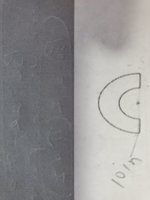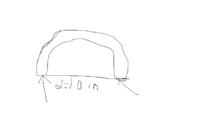eddy2017
Elite Member
- Joined
- Oct 27, 2017
- Messages
- 2,525
the figure above is made by cutting a circular hole with a diameter of 10 inches out of a larger circle which has an area of 314 inches squared, then cutting the resultant figure in half. Both circles share a center.What is the perimeter of the figure above in inches.
Any hints ?.
Any hints ?.


